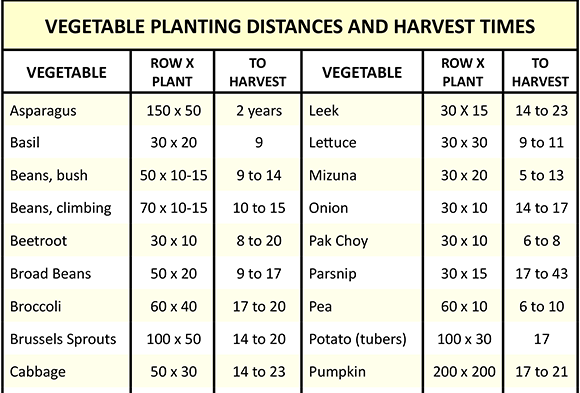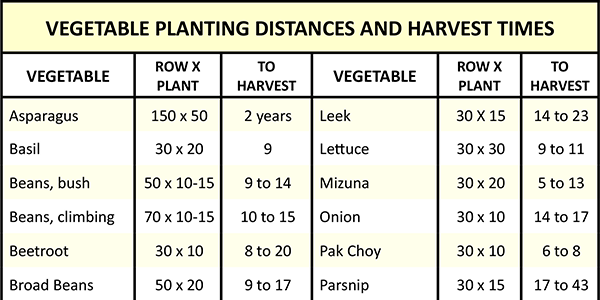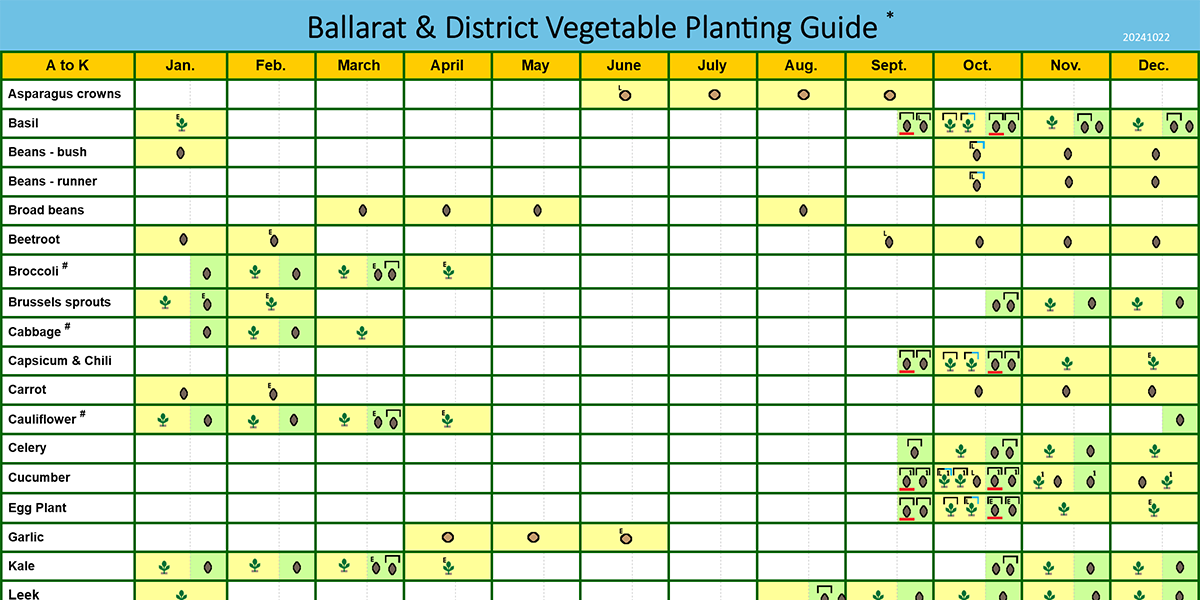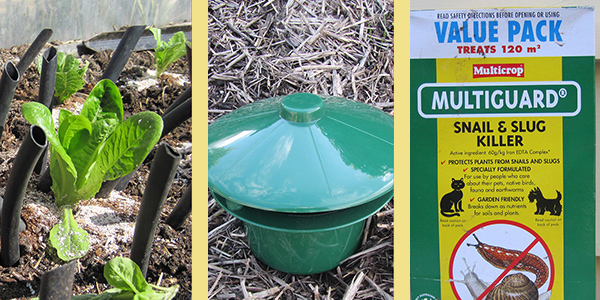Planting distances and harvesting times for individual vegetables can vary considerably depending on factors such as the climate, seasonal weather variations, and the varieties of vegetables planted. However, it is good to work from a baseline. This printable Vegetable Planting and Harvesting Times chart is a good starting point for veggie gardeners to work from when planting vegetables. Though note that it only lists key vegetables.

To download a printable PDF of the Vegetable Planting Distances and harvest times chart click HERE.
There are recommended distances between vegetables and between rows of vegetables to maximise productivity. Plant too far apart and you will be wasting valuable garden space but planting closer together increases the risk of pest and disease problems.
Some vegetables, such as Brussels sprouts, do not do well when planted closer together than the recommended distance as this tends to reduce the size of the sprouts. Others, such as tomato plants, can have fruit ripening problems as bunching up tomato plants restricts airflow in the immediate area. A summer breeze brings warmth and warmth is a key factor in the tomato ripening process.
All vegetables planted closer together than the recommended distances are more susceptible to fungal diseases as fungus does best when leaves are moist and there is no breeze. Vegetable leaves dry more quickly when there is a breeze, planting vegetables closer together restricts the airflow around them more than ones planted at the recommended spacing.
Other vegetables can be planted closer together than the recommend distances. For example; planting cauliflower plants closer together usually results in smaller cauliflowers, a good practice if you only want small cauliflowers.
Lettuces can be planted very closely together and harvested as tiny picking lettuces. This is a good practice in summer when mature lettuces often take on a bitter flavour.
Other vegetables can have their spacing reconfigured to adapt to confined spaces. An example of this is corn. Traditional distances for planting corn vary from 20 to 25 cm apart with 60 to 100 cm between rows. However, these distances do not fit the dimensions of a typical raised bed, (around one metre wide). By planting corn with 35 cm between plants in a triangulate pattern I have been able to successfully grow corn within the confines of a raised bed. For more information see: Planting Corn In A Raised Bed.

Thickly sown lettuce plants grown as immature picking lettuces.

Corn grown in a raised bed using the unconventional planting spacing of 35 cm in a triangulated pattern. For more information on how to grow corn in a raised bed see: Planting Corn In A Raised Bed
Climate has a big influence on planting distances. For example: I am told that in the tropics it is better to plant your vegetables closer together than the recommended planting distances so that they partially shade each other from the harsh tropical sun, (though note that I have no direct experience of doing).
The only way to work out whether various vegetables can be planted closer together in your garden is to experiment.
Included in this planting guide is the time taken for vegetables to be ready to harvest. Harvesting times are useful for insuring you have vegetables ready to pick when you need them. It is also useful for checking whether late plantings of frost sensitive vegetables will be ready to harvest in time before the first Autumn frosts.
Though note that harvesting times will be subject to seasonal and weather variations, the times listed are only a rough guide.




